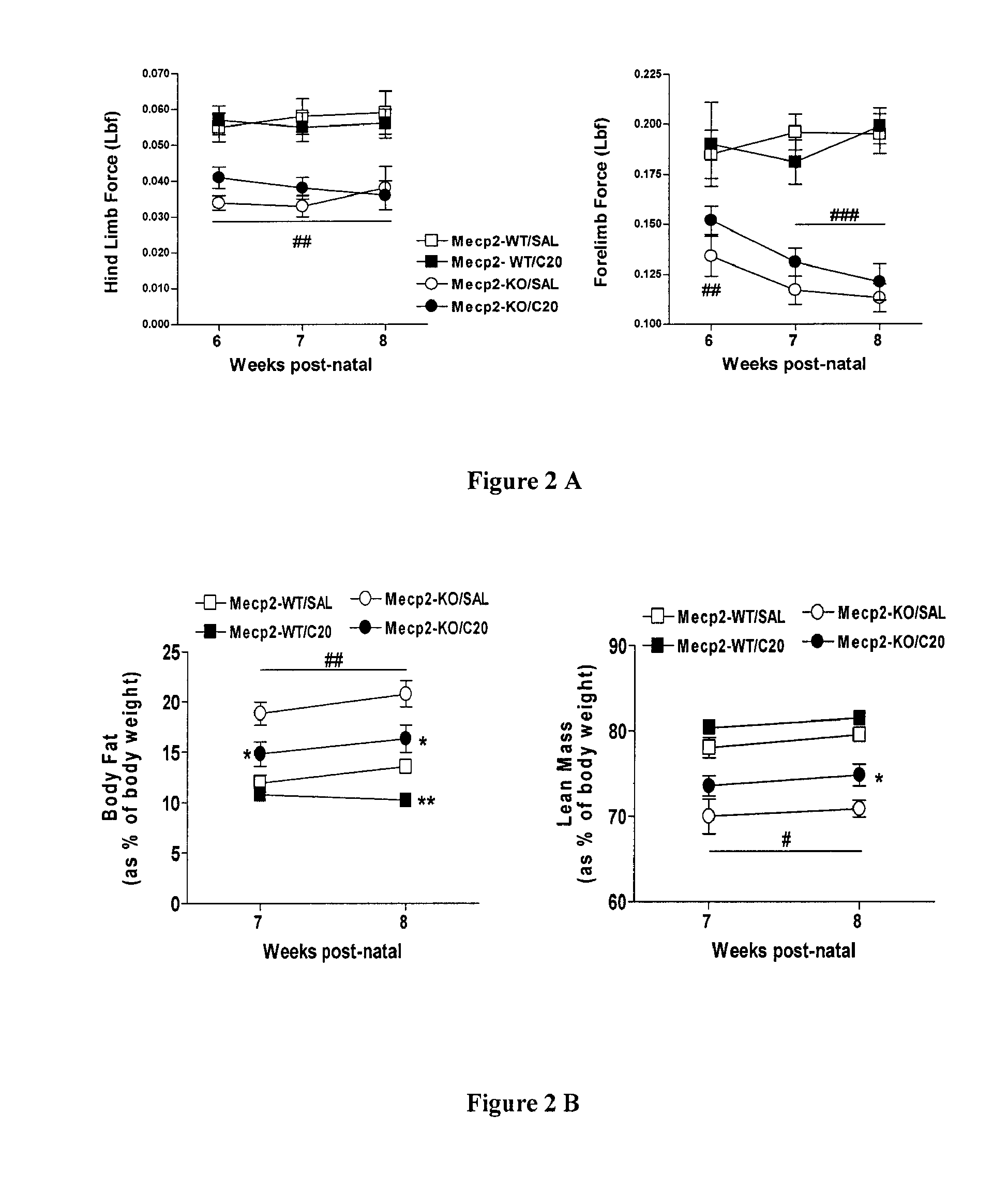Use of trkb antibodies for the treatment of respiratory disorders
a technology for respiratory disorders and antibodies, applied in the direction of antibody medical ingredients, drug compositions, peptides, etc., can solve the problems of profound disability of rett patients, no effective treatment of disease, and patients at risk of sudden death of rett patients, etc., to promote neurite outgrowth, suppress neural cell death, and stabilize trkb signaling
- Summary
- Abstract
- Description
- Claims
- Application Information
AI Technical Summary
Benefits of technology
Problems solved by technology
Method used
Image
Examples
example 1
Administration of TrkB Agonist Antibody (C20) to Mecp2 Mice
[0231]An TrkB Agonist Antibody (C20) or saline was given intraperitoneally twice a week to Mecp2-KO and wild type males from 4 (early symptomatic) to 8 weeks (late symptomatic) of age at the dose of 3 mg / kg body weight and the animals were tested between 6 and 8 weeks. There were 9 to 14 mice per group tested, with four groups overall (wild type with saline, wild type with mAb administered, knockout with saline, and knockout with mAb administered). Mecp2 knockout mice were purchased from Jackson Labs (line B6.129P2©Mecp2tm1.1Bird / J (#003890)).
[0232]As seen in FIG. 1A, the mice showed a drop in body weight when TrkB agonist mAb was administered. The top line (with white square icons as data points) represents the Mecp2 wild type mice with saline administered. The second to top line (with black square icons as data points) represents the Mecp2 wild type mice with TrkB agonist antibodies administered. The second to bottom line ...
example 2
Administration of TrkB Agonist Antibody (C20) to Mecp2 Mice
[0239]For testing of apneas, whole body plethysmography can be employed, using a system designed by Buxco Research Systems. Conscious, unrestrained mice are placed into plethysmograph chambers (upright plexiglass cylinders 4 inches in diameter and 5 inches high). Airflow is maintained to ensure a constant exchange of fresh air into the chambers, and food, bedding, and water is provided. To accurately assess frequency of apneas, mice need to acclimate to the plethysmograph chambers. Once they have fully acclimated, airway response recordings are performed at various intervals without the need to remove animals from the chambers. The acclimation period and recording periods should not exceed two hours; therefore, the mice will not be in the chambers for more than two hours at a time.
[0240]Plethysmograph recordings are performed no more than twice a week in the same animal. Once plethysmograph recordings are completed, mice are...
PUM
| Property | Measurement | Unit |
|---|---|---|
| dissociation constant | aaaaa | aaaaa |
| dissociation constant | aaaaa | aaaaa |
| dissociation constant | aaaaa | aaaaa |
Abstract
Description
Claims
Application Information
 Login to View More
Login to View More - R&D
- Intellectual Property
- Life Sciences
- Materials
- Tech Scout
- Unparalleled Data Quality
- Higher Quality Content
- 60% Fewer Hallucinations
Browse by: Latest US Patents, China's latest patents, Technical Efficacy Thesaurus, Application Domain, Technology Topic, Popular Technical Reports.
© 2025 PatSnap. All rights reserved.Legal|Privacy policy|Modern Slavery Act Transparency Statement|Sitemap|About US| Contact US: help@patsnap.com



